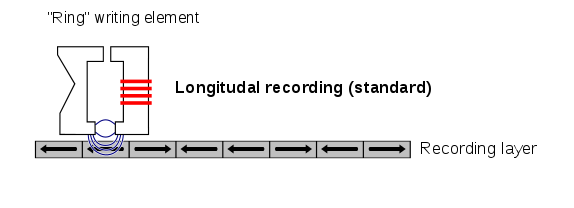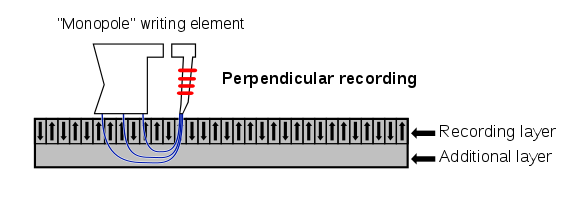I recently wanted to buy a new Harddisk. I did not want one that uses "shingled magnetic recording" because thats awfully slow. Instead I looked for a "perpendicular magnetic recording" HDD, but I learned thats not a thing anymore. Instead I could buy CMR disks.
For those getting here by google looking for a quick answer: CMR=PMR.
For those who want to know why PMR was renamed to CMR and why SMR disks are slow:
# How do Harddisks work?
Harddisks store information by polarizing small magnets. As you might know, all magnets have a North and a South pole. The writehead of a hdd flips tiny magnets to reflect binary code and a north-south-magnet could mean 1 and a south-north magnet means 0.
# LMR
Early HDDs used longitudinal magnetic recording. The magnets were flat on the discs.

# PMR
Newer harddisks use perpendicular magnetic recording. The magnets were errected so the writehead only "sees" one end of it. This improves storage density a lot.

Today there are 2 diffrent Types of PMR Disks:
## CMR
Because the writehead is wider than the magnet track, **conventional** PMR disks had a guard space between the tracks to prevent it from overwriting adjacent tracks. They were the First PMR disks so they were first named PMR. When SMR disks invented, they had to be renamed to conventional magnetic recording because PMR became ambiguous.
[Image Source][1]
## SMR
In contrast to CMR disks SMR disks do not have guard space. Instead they overwrite adjacent tracks and then rewrite them. Thats why they are so slow: Whenever you write data they actually write a multiple of that.
[Image Source][1]
[1]:https://www.seagate.com/de/de/tech-insights/breaking-areal-density-barriers-with-seagate-smr-master-ti/
4 Replies to “PMR, SMR, CMR, I-just-want-a-hdd-MR”